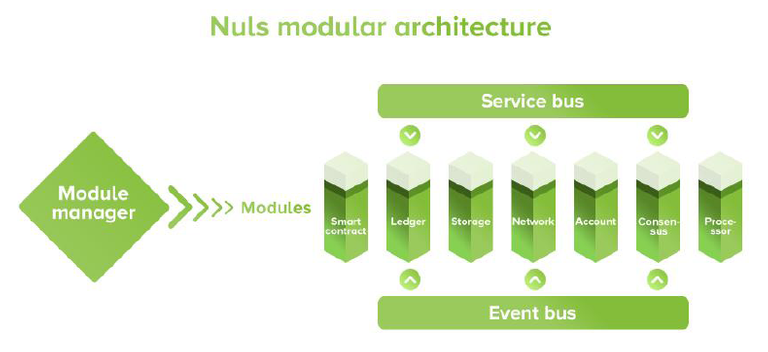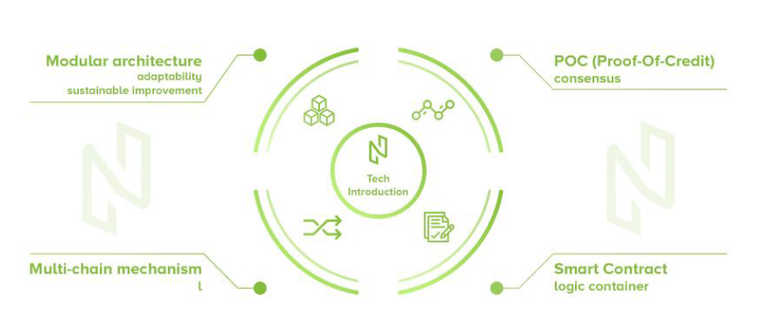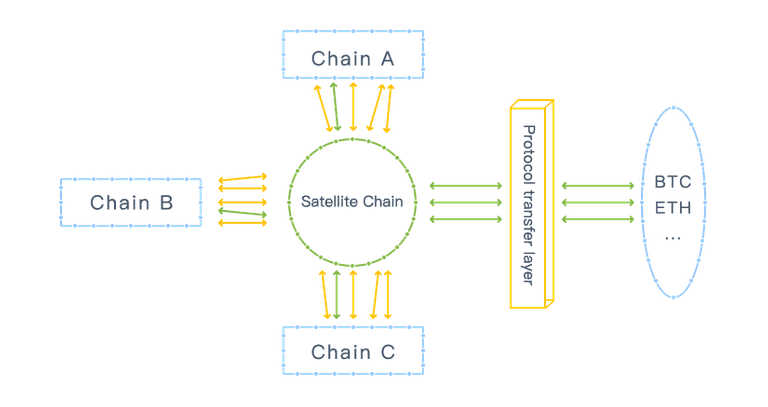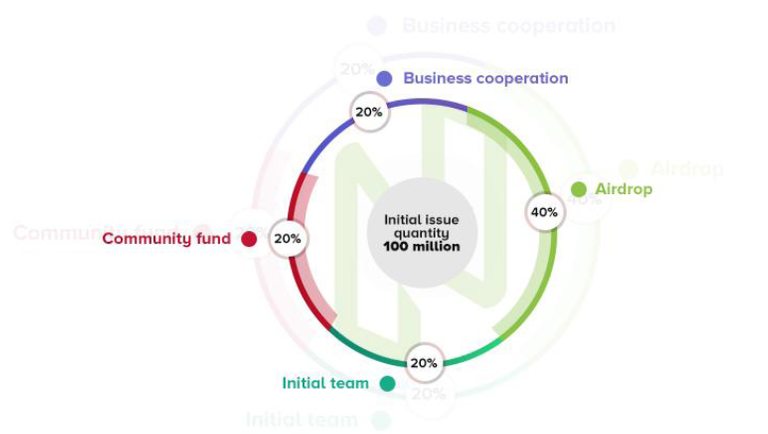




Ushered in the era of blockchain technology, there have been many blockchain projects, ICOs since the invention of blockchain technology, where the technology uses a cryptographic mechanism to eliminate the role of a third party and the business or transaction can happen in a p2p network in a distributed and decentralized way.
There are many blockchain projects, services, start-up etc in the blockchain sphere and crypto sphere. But by large these projects are a kind of offering services to one another within in the crypto sphere, but to the outside of the crypto sphere, it seems like an isolated segment. The reason is that one blockchain project is being compatible with another blockchain project but not compatible with the non-blockchain project and the real world as of now is yet to be blockchain based. So there is a big gap between the crypto sphere and the real world.Therefore there is a requirement to make the entry level easy for the non-blockchain industries to apply into blockchain technology. Every industry has got the expertise in its own domain and it is not possible for every industry to have a developer's standard skill to adopt blockchain technology. It is the responsibility of someone within the blockchain sphere to come forward and offer a solution where the entry level will become easy and the users can make the choice of their chain along with the different parameters like consensus, rules, anonymity etc, so that it should be flexible and customizable.

NULS is such a name in the blockchain sphere which can provide a modular blockchain, customizable as per the need of the user or business. The user or a business can set its own parameters such as consensus like PoS, PoW or DPoS or dBFT etc, can make the chain public or private, can have the DApps with full turing complete, can make it permissionless if they want, can have their own wallet, own explorer etc.
In this article, we will compare NULS with other blockchain peers like EOS, NEO and LISK. The various parameters on the basis of which this comparative analysis will be made are:-
- Underlying Fundamental
- Consensus Protocol
- Smart Contract
- Multi Chain (Main Chain & Side Chain)
- Cross Chain Consensus
- Economic Model
- Scalability

EOS
Underlying fundamental of EOS is based on scalability, decentralized applications(DApps), authentication services, zero charge transaction etc. The underlying technology that powers EOS is Graphene and it is based on DPoS. The Graphene technology makes the breakthrough in scalability. It can scale up 10000 transactions per second very easily.
NEO
The underlying fundamental of NEO is the utilization of digital identity to digitalize assets, so that using smart contracts, the automation of digital assets can be possible to realize "smart economy". It enhances the interface of crypto economy with the real-world traditional economy through the distributed blockchain network.
LISK
The underlying fundamental of LISK is the utilization and optimization of side chains without relying much upon the main chain, so that the developers and users can find it easy to blockchain application. The developers can create, distribute and manage decentralized blockchain application by deploying their own side chain which is linked to LISK main chain.
NULS
The underlying fundamental is modular architecture which can be customizable as per the requirement of the user. Using ready-made developer's tool one can customize his own blockchain, sets his own functional parameters, can make it public or private, can code his own consensus protocol or can choose any consensus protocol. NULS chain factory will make it simple for the user which is cost effective as well as secure.
It has NULS kernel which consists of module manager, service bus and event bus and the NULS kernel manages the various modular components like smart contract, ledger, storage, network, account, consensus, processor etc.
The loading and unloading of modules happen in the module manager and it allows the communication with other modules and subsequent execution of actions.

A consensus protocol is a vital mechanism to secure a blockchain and to enable a transaction to execute in a distributed and decentralized network. The fundamental aspect of a particular blockchain is greatly influenced by the type of consensus protocol.
EOS
The underlying consensus protocol of EOS is DPoS(Delegated proof of Stake). DPoS is similar to that of PoS with the only difference that an user/influencer has the ability to delegate his influence to another peer. DPoS enhances the speed of transaction. So it offers better scalability.
NEO
The underlying consensus protocol of NEO is dBFT, where the stake holder of NEO can elect a delegate node, which can produce blocks. This can also scale higher but at the cost of decentralization. In dBFT protocol of NEO, the tokens holders of NEO are ordinary nodes. Ordinary nodes can not create and validate a block. Block keeping nodes can validate a block. The ordinary nodes can vote for block keeping nodes and to become a block keeping node, there are certain requirements like special equipment, dedicated internet connection, certain amount of GAS. It enables large scale participation in consensus through proxy voting.
LISK
The consensus protocol of LISK is DPoS.
The upside of DPoS protocol are- scalability, supports enterprise level apps, energy efficient, less hardware cost etc.
The downside of DPoS protocol are- delegates could form cartels etc.
NULS
The underlying protocol of NULS is PoC(Proof of Credit), which is an evolution or improved version of PoS. When a PoS protocol combines with a credit rating system to the block producer, then it is known as PoC(Proof of Credit). The user who wants to run a node has to stake NULS tokens which will be locked and when the user stops running the node, he can unlock the tokens.Credit rating is a coefficient to validate a user's integrity and trustworthiness in the network. This credit rating has two alerts- Yellow Card Alert & Red Card Alert.
Yellow Card Alert- This alert is for inadvertent mistake or the mistakes which is beyond the capacity of the user such as computer crash, sudden disconnection of internet services etc.
Implication/Punishment-
(a) Coins frozen for a short period (72 hr)
(b) Credit ratio downgraded
Red Card Alert- This alert is for hostile & deliberate attack on the network.
Implication/Punishment-
(a) Coins frozen for a longer period(30 days)
(b) Credit ratio downgraded to a level lower than the minimum threshold so that it can not participate in block validation again.

Contract means an agreement between two individual or parties along with certain rules, terms and conditions, which is binding upon both the parties to execute a certain service.
Smart Contract means the contract which defines a certain digital asset with inputs/rules, which is binding upon both the parties and can be executed in a trust-less decentralized manner.
EOS
EOS smart contracts are executed in EOSIO nodes and records are transparently stored on the blockchain. EOS smart contract defines a set of obligations, parameters, actions, information, interface code etc.
NEO
The smart contract of NEO which is popularly known as Neocontracts is the core fundamental of NEO. Here the smart contracts are responsible for the creation and management of digital assets. The advantage of NEO smart contract is that it supports many programming languages.
LISK
It does not offer a smart contract platform.
NULS
It has a built-in NULS Virtual Machine known as NULSVM. The smart contract functions are executed between external service module such as RPC module and infrastructure module such as network module, storage module, account module etc. The computation is done by NULSVM. It also supports higher level programming languages so that a developer can compile his program through the interpreter and VM can read and understand that application.It allows developers to create wide range of DApps and these are turing complete and fully compatible with UTXO. The ready to use smart contract module of NULS opens up a new possibility for the commercial application.

EOS
It does not have any side chain.
NEO
NEO also does not have any side chain.
LISK
It does have the main chain and side chain. Here the side chains are utilized most and reliance upon the main chain is reduced significantly. Developers can easily deploy their JavaScript app to LISK hoisting & storage node. So in short, it offers a "plug & play" system for developers. LISK VM is integrated with LISK API which interfaces with the blockchain.
NULS
NULS is a multi-chain system consisting of main chain and sub chains. In the main chain, the consensus procotol is PoC. In the sub chains, the user can customize their own consensus protocol like PoW, PoS, DPoS, dBFT, POOL etc.NULS provides all the infrastructures. Applications can be built on the top of their respective sub chains. The main chain domain and sub chain domain can be able to communicate through cross chain domain and the cross chain nodes will act as a medium of link between main chain domain and sub chain domain.
In NULS multi chain system, several sub chains can be able to communicate with the main chain. So here the multi chain system is interoperable.

EOS
NA
NEO
NA
LISK
NA
NULS
In NULS, the block validation happens through cross chain consensus. Data is circulated through both main chain and sub chain. The main chain audits and verifies the block headers. The cross chain nodes(C3N) of the cross chain domain(C3D) plays the role of link between main chain and sub chain and the communication happens between main chain and multiple sub chains.

EOS
For EOS the coin is EOS. Owning or holding EOS token will help gaining access to EOS blockchain resources. The developer by holding EOS coin can use the server resources and they do not need to spend those coins. The decentralized application can be able to communicate with each other share their frameworks. Total supply of coin is 1 billion. Circulating supply is 0.9 billion. Market capital is 4.84 billion usd. The current price of EOS is 5.84 USD per token. Rank is 6.
NEO
For NEO it has two coins. NEO and GAS. GAS is the fuel token for the realization of NEO network resource control. So for various operations and transaction GAS will be required every time. NEO token has the ability to generate GAS token at an ROI of 5% and GAS tokens are generated through decay algorithm. Total supply of NEO token is 100 million and 100 million GAS token will also be generated. The circulating supply of NEO is 65 million. Current market capital of NEO is 1.01 billion. Rank is 15.
LISK
It has only token which is LISK. In order to perform various operation between main chain and side chain, LISK token is required. Total supply is 127 million. Circulating supply is 112 million. Market capital is 309 million usd. Current price is 2.76 USD. Rank is 29.
NULS
NULS token is the native token of NULS economic model. NULS token is used in its ecosystem for various operation like supporting of NULS based applications. performing exchange in sub chain digital assets, for NULS development, paying miner fees, transaction fees etc. Total supply is 100 million. Circulating supply is 40 million. Market capital is 42 million usd. Current price is 1.05 usd. Rank is 123.
EOS
It can scale 50000 transactions per second in general, however it has the capability to scale up to 1 million transactions per second. Block time is 0.5 seconds.
NEO
It can scale up to 10000 transactions per second. Block time is 20 seconds.
LISK
It can scale up to 25 transactions per second. Block time is 10 seconds. The blocks are theoretically limited by their size, but practically limited by their transactions.
NULS
It can scale 2000 transaction in general. However, using side chains it has the capability to scale up to 1 million transactions per second. Block time is 10 seconds.

While EOS is pioneered in scalability, NEO focuses on smart economy, LISK has the tendency to make the developer's job easy and NULS makes the entry level of Blockchain technology much easier by offering a modular blockchain architecture where users can customize their own blockchain in the form of sub chain using the NULS modules and this is what is a very very key feature in making the mass adoption of blockchain technology in real physical world.











Hi Shivohum
Plz remember to post this article link on our forum(below link)
https://nuls.community/d/139-want-200-nuls-starting-writing-now-200-nuls
https://steemit.com/nuls/@nuls/winners-and-awards-the-want-200-nuls-starting-writing-now
I saw that list of winner. Thank you for the contest.
My NULS address
NsdvM2PYTDSVQX7qkiK2jYnRNC8wYmQZ
Thank you and Have a great day.
Congratulations @shivohum2015! You have completed the following achievement on the Steem blockchain and have been rewarded with new badge(s) :
Click here to view your Board of Honor
If you no longer want to receive notifications, reply to this comment with the word
STOPDo not miss the last post from @steemitboard:
Congratulations @shivohum2015! You have completed the following achievement on the Steem blockchain and have been rewarded with new badge(s) :
Click here to view your Board of Honor
If you no longer want to receive notifications, reply to this comment with the word
STOPDo not miss the last post from @steemitboard:
Congratulations @shivohum2015! You have completed the following achievement on the Steem blockchain and have been rewarded with new badge(s) :
Click here to view your Board of Honor
If you no longer want to receive notifications, reply to this comment with the word
STOPDo not miss the last post from @steemitboard:
Congratulations @shivohum2015! You have completed the following achievement on the Steem blockchain and have been rewarded with new badge(s) :
Click here to view your Board of Honor
If you no longer want to receive notifications, reply to this comment with the word
STOP